American View
Feature
Sephardi Voices: Recording a Forgotten Exodus
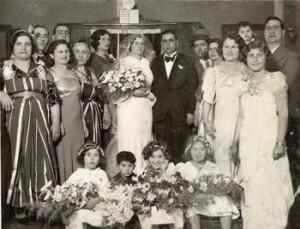
Libyan Regina Bublil-Waldman, 65, can still vividly describe the brilliant sun and taste the fresh fish her father caught during a Shabbat spent frolicking on a warm North African beach. Abdulla Dangoor, 99, remembered, before his death last November, the flashing colored lights over the Tigris River in celebration of Ottoman Turkish forces being cast out of the land then still referred to as Mesopotamia.
These are the fading recollections of those Jews—mainly Sefardim (those of Iberian descent) or Mizrahim (those of non-Western descent such as Southern Arabia)—who fled the Middle East and North Africa in the heady years following World War II and the birth of Israel in 1948. Now, for the first time, an international effort is being made to assemble the oral histories of those who survived what some refer to as the Forgotten Exodus.
The project, called Sephardi Voices (www.sephardivoices.org.uk), is modeled after Steven Spielberg’s University of Southern California Shoah Foundation: The Institute for Visual History and Education, which has digitally recorded the memories of some 52,000 Holocaust survivors. Similarly, Sephardi Voices, active in the United States, Britain and Israel, is filming extensive audiovisual interviews with survivors of the Forgotten Exodus. So far, 158 have been completed.
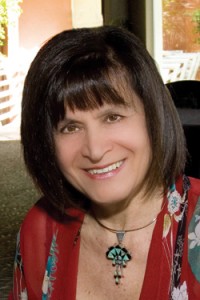
The interviewees share family history and home life, religious customs, school, professional and social lives, relations to non-Jews and experiences of persecution. Like Ashkenazim, Jews in Arab countries had been leaders and innovators.
“Their stories of [Jewish] displacement, fractured identities, material losses, resettlement and eventual integration into new societies are the project’s mission,” says Henry Green, Ph.D., Sephardi Voices’s international director.
Green’s interest and sympathy for Jewish communities of the Middle East date to the early 1970s, when, as a student at the Hebrew University of Jerusalem, he saw firsthand the second-class status many Mizrahic or Sefardic Jews contended with. Their squalid living conditions and poverty troubled him. In 1984, he became director of Judaic studies at the University of Miami, where he built up its Sefardic studies program.
Anti-Semitism, pogroms and second-class status existed in Muslim lands prior to the mid-20th century, but the ethnic hatred peaked and turned more violent after 1948. About 850,000 Jews chose to leave or fled en masse, most, Green says, moving to Israel (50 percent), France (25 percent) or the United States (12 percent).
“From Baghdad to Alexandria, from Tripoli to Beirut and most of North Africa, Jews suffered arbitrary arrests, state-sanctioned discrimination, confiscation of property, beatings, killings by mob and finally expulsion,” says Bublil-Waldman, cofounder of the advocacy organization JIMENA: Jews Indigenous to the Middle East and North Africa, which also has an Oral History Project (www.jimena.org). The terrible days following the Six-Day War in 1967 spurred her to political activism, and she serves as vice president of Justice for Jews from Arab Countries.
During World War II, Nazi propaganda helped foster a hatred of Jews in some Middle Eastern nations; later, Arab nationalist movements promoted similar sentiments. Jewish communities that had existed—and thrived—for centuries, even millennia, were now seen as potentially traitorous; arrests and detentions became common. Jews were monitored by the police; parties or religious functions might be mistaken for a meeting of Zionist sympathizers. Movement and residency were restricted, as were commercial activities. Communications were often illegal. In Iraq, phone service was cut out in many Jewish homes.
“[Israel] became a point of friction,” said Dangoor in an interview; a Baghdadi Jew born in 1914 to a prominent family, he moved to Britain in 1961 where he lived in London until he died in November 2013. His grandfather Hakham Ezra Reuben Dangoor was chief rabbi of Baghdad and his father, Eliahou Dangoor, was a prominent book printer who was the textbook publisher for Iraq’s Ministry of Education.
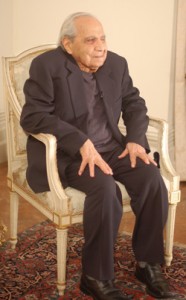
Sefardim were often highly assimilated. “Regional and cultural borrowing of different local customs was common and shaped the outlines of the Sefardic diaspora in Islamic lands,” Green says. For example, at the turn of the last century, many Jewish women wore burkas, like their Muslim neighbors. In Egypt, the country’s first constitution was cowritten in 1923 by Jewish nationalist Murad Beh Farag, and one of Egypt’s most popular singer-actresses in the 1920s, Leila Mourad, was Jewish.
Jews were particularly important to Iraq’s economy, government and civil service. The nation’s first minister of finance, Sir Sassoon Eskell, was Jewish, and in the first half of the 20th century, Jews were well represented in the Baghdad Chamber of Commerce and also served in the Iraqi parliament. Jacqueline Khalastchi was born in 1929 in Baghdad, a city that was about a third Jewish at the time of World War I (1914 to 1919). Her father, Jousif Khazoom, was an accountant at the Ministry of Health for 28 years. “He knew most of the doctors and most of the pharmacists in Iraq,” she recalls.
Khalastchi had ambitions of becoming a pharmacist—her mother, Souzanne Toeg-Khazoom, had urged her to be a professional—but after 1948, Jews were not allowed to attend pharmacy school. Instead, Khalastchi worked for 22 years as a secretary in a drug store. After 1948, she said, her father was forcibly retired. All Jews in the government were fired, including an uncle who worked for the railway service.
“Thank God, we could survive it and come here,” says Khalastchi, who moved to London in 1971.
Many French-speaking Jews from North Africa found refuge in Canada. David Cohen moved there from Morocco with his family in 1965 when he was 11. “Our education and language bathed us deeply in French culture,” he says. “French colonialism in Morocco freed many Jews like my parents from their status as dhimmis [Arabic for non-Islamic second-class citizens] and provided a road to emancipation, both cultural and economic.” Today, Cohen lives in Los Angeles.
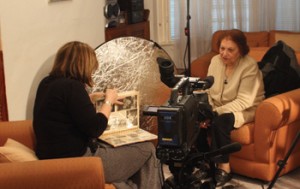
Photo courtesy of Sephardi Voices UK.
Interviewees often tell harrowing stories about their last years in their countries of birth, followed by tales of forced migration and daring escapes. Bublil-Waldman recalls the violent pogroms that raged for days in Libya following the Six-Day War, and the mass destruction and arson that followed. Her father, Rahmin Bublil, an importer of equipment for oil companies, saw his warehouse go up in flames. Jews were expelled and their homes and property and bank accounts expropriated by the government.
En route to the Tripoli airport, seven members of the Bublil family were told their bus was having engine problems and had to pull over. Fortunately, 19-year-old Bublil-Waldman sensed danger and ran to get help. She found a phone and called her British employer. When she returned, she saw the driver had siphoned off all the gasoline from the tank, placed it under the bus and was holding a box of matches.
With the help of her British friends, she rescued her family and drove them to safety. “Anti-Semitism permeates every aspect of their lives,” Bublil-Waldman says of her countrymen. “They grow up in a culture of hatred against Jews.” Her family went to Rome; two years later, Bublil-Waldman moved to San Francisco, where she lives today.
In 1948, about 38,000 Jews lived in Libya. By 1967, approximately 6,000 remained; today, no Jewish community exists. In 1948, there were 75,000 Jews living in Egypt, but after the Suez War in 1956 and the 1967 Six-Day War, that ancient community nearly disappeared. Other North African states have similar patterns of migration. In 1948, 140,000 Jews resided in Algeria; by 1968, only 1,500 remained. In 1948, 370,000 Jews lived in Morocco and Tunisia; by 1968, only 60,000 remained. Jews left the eastern countries of the Middle East in the same manner.
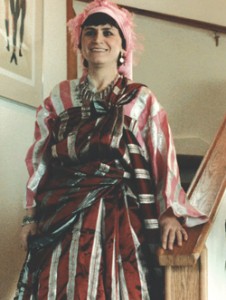
Although grateful for new lives in freedom, many Exodus survivors report lingering feelings of alienation or displacement in their adopted homelands. “I always thought it funny that in Quebec, most people who saw my last name took me for an Anglo Jew, while most people who heard me speak French marked me as someone from France,” says Cohen. Often misunderstood, Sefardim are perceived as exotic to many, a minority within the larger Ashkenazic community.
Launched by Green in Miami, the first formally organized branch of Sephardi Voices was created in London in 2009. Branches are being established in New York, on the West Coast, in Paris, Toronto and Montreal.
Bea Lewkowicz, Ph.D., social anthropologist and oral historian, is director of the London branch. The child of Holocaust survivors, she grew up in Germany and has interviewing experience with the Shoah Foundation. Prior to that, her first significant assignment was conducting oral history interviews while researching the Jews of Salonika, Greece.
“I was drawn to the themes of history and identity,” she explains, “and was very keen to explore what being Jewish meant in different cultural contexts and how the experiences of migration and trauma have affected these identities.”
Sephardi Voices UK has an agreement with the British Library to archive their interviews. Green has an agreement to archive his interviews at the Hebrew University of Jerusalem, which is part of the Israeli National Library. Sephardi Voices’ international coordinators are exploring the idea of producing a series of documentaries based on their findings.
Jews from the Middle East and North Africa now make up roughly half of Israel’s population. The Israeli government recently began a diplomatic initiative to have the persecution and expulsion of the Jews from Arab lands recognized. In September 2012, a first-ever conference on this topic was convened at the United Nations. The Knesset is considering establishing a national day to commemorate the victimized Sefardim.
By revealing the traumas and difficulties that Sefardim have had to cope with, Green hopes that a new understanding of 20th-century Jewish and Zionist history will emerge.
“With memories failing and voices disappearing, Sephardi Voices is the last chance to preserve the legacy of this 2,500-year-old civilization,” he says.
Evan Berkowitz is a journalist and freelance writer who lives in South Florida.








 Facebook
Facebook Instagram
Instagram Twitter
Twitter
Leave a Reply